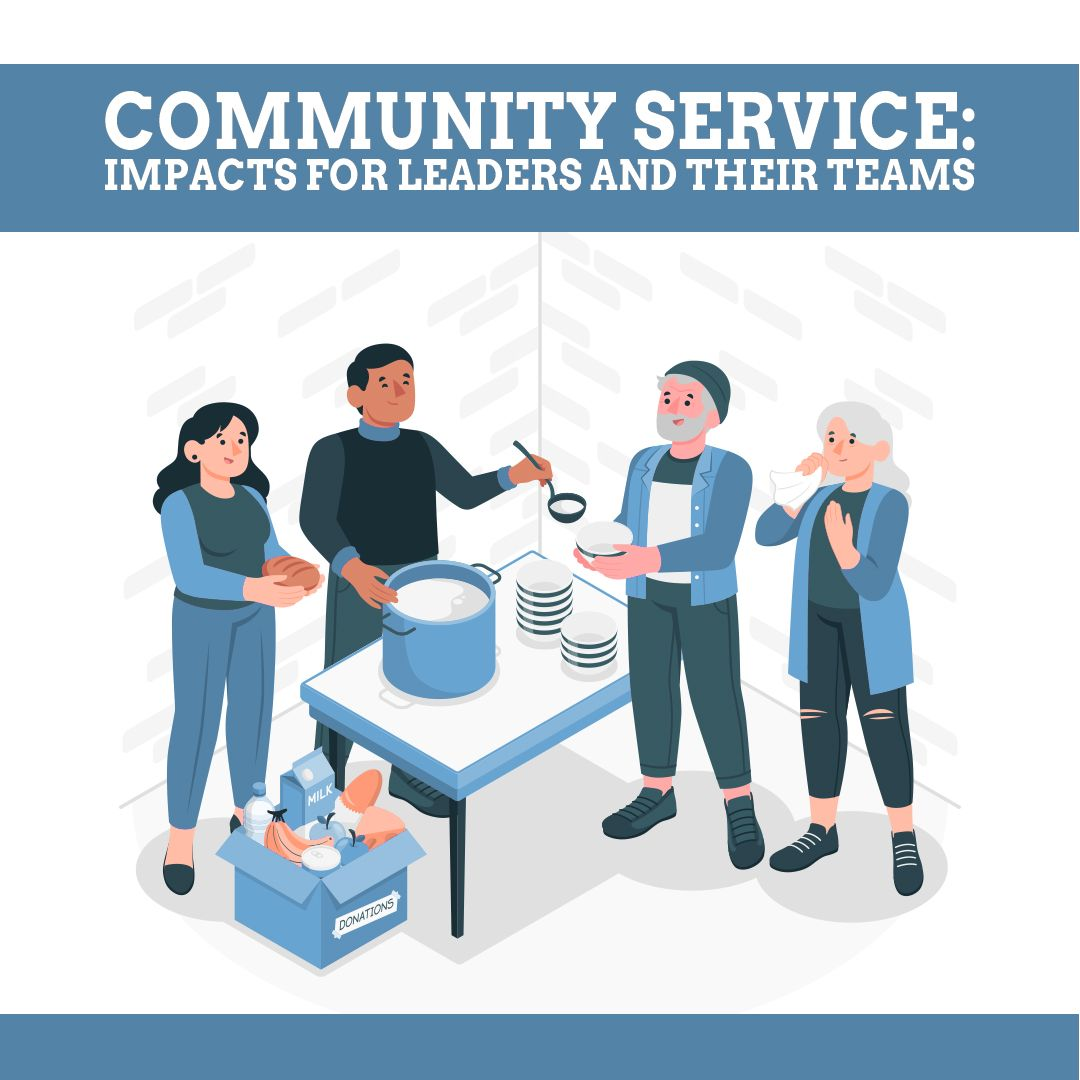In today’s evolving workplace, leadership isn’t just about metrics, meetings, and milestones. It’s also about modeling values. One powerful way leaders can model their values is by actively engaging in community service. But is community service a wise use of a leader’s time? Does it motivate teams or risk sending mixed signals?
Let’s explore the benefits and potential downsides of community involvement from a leadership perspective.
The Leadership Case for Community Service
- Walking the Talk of Servant Leadership
At its core, servant leadership is about putting others first. When leaders participate in acts of service – whether supporting a food bank, mentoring youth, or building homes with Habitat for Humanity – they’re living out that principle. It sends a clear message: leadership isn’t about status; it’s about service.
- Building Stronger Team Connections
Service projects create opportunities for employees and leaders to interact outside traditional hierarchies. For example, in a work setting, a leader may be directing strategy. But during a community project, that same leader might be hammering nails beside an entry-level employee. This reversal of roles breaks down barriers and fosters connection, empathy, and respect across ranks.
- Encouraging Personal Growth for Everyone
Community service pushes people out of their comfort zones. It encourages leaders and employees alike to try new things, take on unfamiliar roles, and develop soft skills like communication, teamwork, and problem-solving. When employees see their leaders supporting this kind of growth, it builds trust and a sense of shared purpose.
- Inspiring a Culture of Giving Back
When leadership visibly values community engagement, it inspires others in the organization to do the same. That could mean employees volunteering their own time, participating in team-led initiatives, or even proposing their own service projects. A culture of giving often starts at the top.
The Potential Downsides of Community Service (and How to Navigate Them)
- Mixed Messaging Without Intention
If service projects feel performative or mandatory, they can backfire. Employees might see them as distractions from “real work” or as PR stunts. That’s why it’s essential for leaders to approach community service with authenticity and intention, not obligation.
- Time Commitment vs. Organizational Demands
Leaders have limited time and many demands. If service work becomes a drain on energy or availability, it can hurt more than it helps. The key is balance – choosing projects that align with the leader’s strengths and the organization’s values.
- Unequal Access or Opportunity
If only certain employees or departments are encouraged or able to participate, it can create a sense of exclusion. Leaders should ensure that access to service opportunities is equitable and inclusive across teams.
Tips for Leaders: Making Community Involvement Count
- Be visible but not dominant. Let your team lead in service settings. Support from the sidelines when appropriate.
- Align service with your values. Choose causes that reflect your organization’s mission and your own leadership philosophy.
- Empower employees. Encourage team members to find and pursue causes that matter to them, even outside official work events.
- Reflect and learn. After a service experience, debrief with your team. Ask: What did we learn? How did it change us?
Final Thoughts: Community Engagement Is a Leadership Strategy
Community service isn’t a detour from leadership; it’s an expression of it. When done with strategy and sincerity, it helps leaders grow, fosters team unity, and creates ripple effects of impact far beyond the workplace. Because, at the end of the day, leadership isn’t just about what you build inside the office. It’s also about what you help build outside of it.



